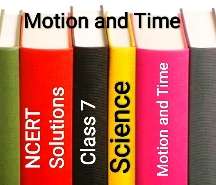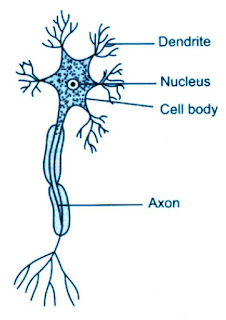NCERT Solutions for Class 7 Science Motion and Time
NCERT Solutions for Class 7 Science Chapter 13 Motion and Time
-------------------------------------------------------------
Board CBSE
-------------------------------------------------------------
TextBook NCERT
-------------------------------------------------------
CLASS Class 7
--------------------------------------------------------
SUBJECT Science
----------------------------------------------------------
CHAPTER Chapter 13
-------------------------------------------------------------
SUBJECT Motion and Time
--------------------------------------------------------------
You May Also Like NCERT Solutions Class 7
Chapter 12: Reproduction in Plants
Chapter 7: Weather Climate and Adaptation of Animals to Climate
Electric Current and Its Effects
Chapter 15: Light
Must Visit: 1. MCQ Class 7 Science.
3. NCERT solutions Class 7 Maths
Question 1:
Classify the following as motion along a straight line, circular or oscillatory motion:
(i) Motion of your hands while running.
(ii) Motion of a horse pulling a cart on a straight road.
(iii) Motion of a child in a merry-go-round.
(iv) Motion of a child on a see-saw.
(v) Motion of the hammer of an electric bell.
(vi) Motion of a train on a straight bridge.
Answer 1:
(i) Motion of your hands while running – Oscillatory motion.
(ii) Motion of a horse pulling a cart on a straight road – Straight line motion.
(iii) Motion of a child in a merry-go-round – Circular motion.
(iv) Motion of a child on a see-saw – Oscillatory motion.
(v) Motion of the hammer of an electric bell – Oscillatory motion.
(vi) Motion of a train on a straight bridge – Straight line motion.
Question 2:
Which of the following are not correct?
(i) The basic unit of time is second.
(ii) Every object moves with a constant speed.
(iii) Distances between two cities are measured in kilometers.
(iv) The time period of a given pendulum is not constant.
(v) The speed of a train is expressed in m/h.
Answer 2:
(i) The basic unit of time is second - Correct
(ii) Every object moves with a constant speed - Not correct
(iii) Distances between two cities are measured in kilometers - Correct
(iv) The time period of a given pendulum is not constant - Not correct
(v) The speed of a train is expressed in m/h - Not correct
Question 3:
A simple pendulum takes 32 seconds to complete 20 oscillations. What is the time period of the pendulum?
Answer 3:
The time taken to complete one complete oscillation is known as the time period of the pendulum.
Time period = (total time taken / number of oscillation)
= (32/20)
= 1.6 seconds
Question 4:
The distance between two stations is 240 km. A train takes 4 hours to cover this distance. Calculate the speed of the train.
Answer 4:
Speed = (distance covered / time taken)
= ( 240 / 4 )
= 60 km/hr
Question 5:
The odometer of a car reads 57321.0 km when the clock shows the time 08:30 AM. What is the distance moved by the car, if at 08:50 AM, the odometer reading has changed to 57336.0 km? Calculate the speed of the car in km/min during this time. Express the speed in km/h also.
Answer 5:
Distance covered by car = 57336.0 km - 57321.0 km = 15 km
Time taken between 08:30 AM to 08:50 AM = 20 minutes = 20/60 hour = 1/3 hour
So, speed in km/min
Speed = (distance covered / time taken)
= ( 15 / 20 )
= 0.75 km/min
Speed in km/h
Speed = (distance covered / time taken)
= (15 ÷ ⅓)
=(15 × 3 )
= 45 km/hr
Question 6:
Salma takes 15 minutes from her house to reach her school on a bicycle. If the bicycle has a speed of 2 m/s, calculate the distance between her house and the school.
Answer 6:
Speed = 2 m/s
Time taken = 15 minutes = 15 × 60 seconds = 900 seconds
Now, distance = speed × time
= 2 × 900
= 1800 m
= 1.8 km
Question 7:
Show the shape of the distance-time graph for the motion in the following cases:
(i) A car moving with a constant speed.
(ii) A car parked on a side road.
Answer 7:
Question 8:
Which of the following relations is correct?
(i) 𝑆𝑝𝑒𝑒𝑑 = 𝐷𝑖𝑠𝑡𝑎𝑛𝑐𝑒 × 𝑇𝑖𝑚𝑒
(ii) 𝑆𝑝𝑒𝑒𝑑 = 𝐷𝑖𝑠𝑡𝑎𝑛𝑐𝑒/𝑇𝑖𝑚𝑒
(iii) 𝑆𝑝𝑒𝑒𝑑 =𝑇𝑖𝑚𝑒/𝐷𝑖𝑠𝑡𝑎𝑛𝑐𝑒
(iv) 𝑆𝑝𝑒𝑒𝑑 =1/(𝐷𝑖𝑠𝑡𝑎𝑛𝑐𝑒 × 𝑇𝑖𝑚𝑒)
Answer 8:
(ii) 𝑆𝑝𝑒𝑒𝑑 =(𝐷𝑖𝑠𝑡𝑎𝑛𝑐𝑒 / 𝑇𝑖𝑚𝑒)
Question 9:
The basic unit of speed is:
(i) km/min
(ii) m/min
(iii) km/h
(iv) m/s
Answer 9:
(iv) m/s
Question 10:
A car moves with a speed of 40 km/h for 15 minutes and then with a speed of 60 km/h for the next 15 minutes. The total distance covered by the car is:
(i) 100 km (ii) 25 km
(iii) 15 km (iv) 10 km
Answer 10:
15 minutes = ¼ hour
Distance = speed × time
The total distance covered by the car
= (40 × ¼) + (60 × ¼)
= 10 + 15
= 25 km
(ii) 25 km
Question 12:
Fig. 13.15 shows the distance-time graph for the motion of two vehicles A and B. Which one of them is moving faster?
Answer 12:
Vehicle A is traveling a longer distance in less time as compared to Vehicle B. So, vehicle A is moving faster.
Question 13:
Which of the following distance-time graphs shows a truck moving with speed which is not constant?
Answer 13:
(iii) Graph is not a straight line, so it shows a truck moving with speed which is not
constant.
Introduction to NCERT Solutions Class 7 Science chapter 7 Motion and Time:
Class 7 NCERT Chapter 13 is an important chapter in physics that deals with the principles of motion, including speed and time and calculation of motion.By reading this chapter we get a clear idea about the use of Motion and Time in our daily lives. The various examples and formulas given in this chapter include a real life demonstration that will motivate students to learn the subject with curiosity and interest.
The Central Board of Secondary Education is one of the most popular education boards in India. CBSE Class 7 is an important step in the academic life of the students. Each question of Motion and Time in NCERT Solution Class 7 Science is answered in detail so that the students can understand the concepts of this chapter in depth.
To know more details in Motion and Time we have to read
Notes on Motion and Time
Sample Paper


